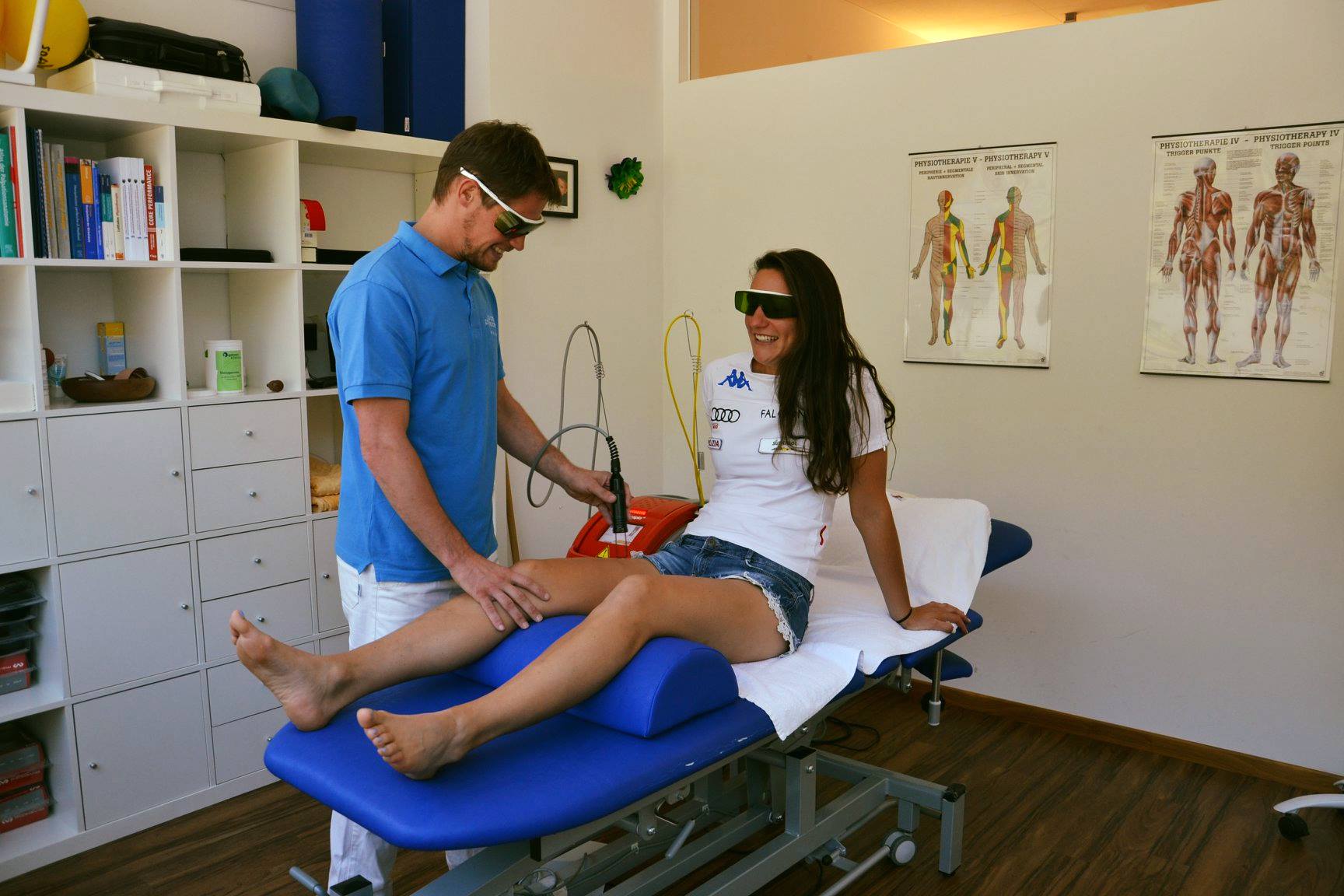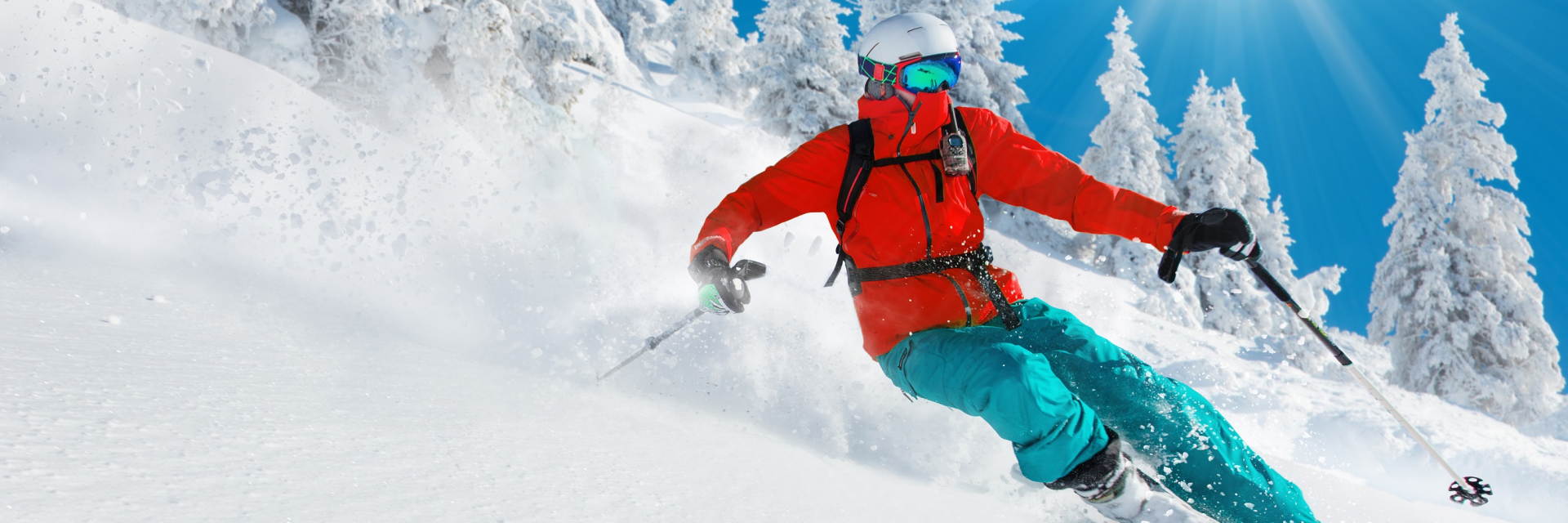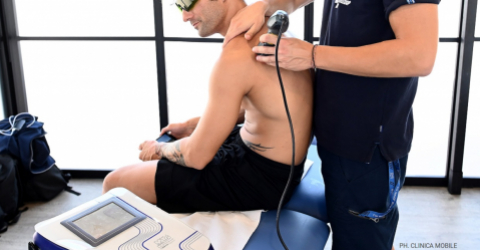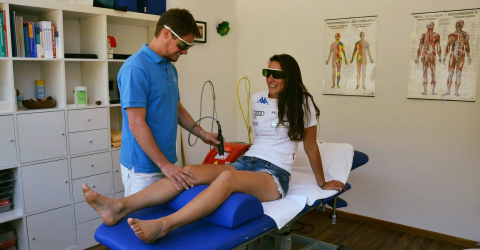Downhill traumas? Just a memory with laser therapy
Targeted training, laser therapy sessions, and balanced nutrition are the ingredients to prepare for the slopes on the snow by reawakening the dormant muscles from the summer relaxation and avoiding to run into common pathologies of skiers with little leg training.
In order not to transform the weekend in the mountains into a weekend of suffering, you have to be ahead of the game by starting a gradual training that combines physical exercise, massages, and device therapies. The lion’s share of the work is done by laser therapy, which reduces the risk of injuries due to traumas and tissue overload (muscles, tendons, joints...), often the cause of chronic pathologies.
‘Thanks to its photomechanical action,’ explains Ivan Peristi (Physiotherapist, OMT – Orthopedic Manipulative Therapist, and SPT – Sport Physiotherapist of Dolomiti Physiocenter, Partner of Dolomiti Sportclinic), ‘laser therapy increases microcirculation and stimulates metabolism within the muscles. This normalizes the tone of the contracted ones and speeds up the repair of microtraumas that are created during intense training sessions. The direct consequence is the reduction of recovery times and the improvement of the result of the training to face the slopes.’

The recommendation to get to the facilities without problems? Depending on the state of starting physical preparation, age, previous injuries or the presence of pathologies, do 1 to 3 weekly applications of laser therapy during the preparation phase.
And if it is not yet enough, Salvatore Germano, Massophysiotherapist – Kinesiologist, also gives reassurance about the efficacy of laser therapy to downhill skiers, snowboarders, and cross-country skiers:
‘During the preparation, it is useful to use laser therapy on the most important muscle chains in the presence of tensions felt by the therapist. This improves their elasticity with positive effects for injury prevention. With this objective in mind, it is also important to work on the mobility of the joints involved in the practice by performing dynamic movements on the joints to increase the ROM (Range Of Motion). These precautions limit the risk of possible traumas caused by muscular retractions, since the joint is freer and more mobile.’
Skis on the shoulders – it’s time to face the ridge!











